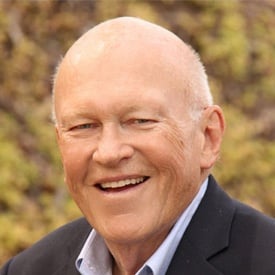I’ve been singing the praises of servant leadership for decades. I always say if you serve your people well—give them direction and support, praise them when they succeed, and redirect them when they get off track—they will, in turn, feel confident in their roles and be empowered to serve your customers well. Your raving-fan customers will tell their friends about you, which will improve your bottom line—and please your stakeholders.
 Companies run by servant leaders have a compelling vision that clarifies who they are (a significant purpose), where they are going (a picture of the future), and what will guide their journey (clear values). People in these companies are loyal and passionate about their jobs, and their engagement and morale are high. Even one servant leader—a department head, for example—can shift the culture in their area with a focus on empowering people, developing their skills, and helping them accomplish their goals.
Companies run by servant leaders have a compelling vision that clarifies who they are (a significant purpose), where they are going (a picture of the future), and what will guide their journey (clear values). People in these companies are loyal and passionate about their jobs, and their engagement and morale are high. Even one servant leader—a department head, for example—can shift the culture in their area with a focus on empowering people, developing their skills, and helping them accomplish their goals.
So what does a servant leadership culture actually look like when it’s in place in an organization? Here are some first-person illustrations by extraordinary servant leader role models Colleen Barrett, Jeff Foley, James Blanchard, and Cheryl Bachelder—all of whom contributed to the book Servant Leadership in Action, which I co-edited with Renee Broadwell.
Colleen Barrett – president emeritus, Southwest Airlines
Southwest Airlines has had a servant leadership culture since the very beginning. Herb Kelleher, our founder, clearly led the way —although he may not have known what servant leadership meant until we told him. Herb and I always said our purpose as senior leaders with Southwest was to support our people. And for more than forty years, Southwest’s philosophy of leadership has been simple: treat your people right, and good things will happen.
It’s not about being soft. Our leaders empower our people to use their own best judgment. Yes, there are written rules—but our employees know the rules are guidelines. Passenger stories about our people handling various situations with grace, humor, and a servant’s heart are legendary. For example, some of our pilots have paid for hotel rooms for customers who were stuck for the night in an unfamiliar city. They didn’t call and ask if they’d get reimbursed; they did it because that’s who they are. When people realize they can be trusted and won’t get in trouble for bending or breaking a rule, they want to do their best.
The employees of Southwest Airlines know they are important and empowered to make a positive difference on a daily basis. No, a servant leadership culture isn’t about soft management. It’s about doing the right thing.
Jeff Foley – brigadier general, U.S. Army (retired)
During my 32-year career as a soldier, I learned five key ways servant leaders shape the culture of the U.S. Army:
- They commit to lead. The oaths, values, and creeds of the U.S. Army drive home the commitment to serve causes greater than ourselves.
- They listen. One of the most profound servant leadership skills in any organization is the ability to listen with the intent of understanding.
- They develop leaders. The Army develops soldiers into leaders through formal education, leader development programs, and on-the-job coaching.
- They communicate purpose and intent. From sergeants to commanders, Army leaders communicate their expectations and then help their people succeed in meeting those expectations.
- They build trusted relationships. Servant leadership comes alive when mutual trust exists between leaders and followers. When soldiers know their leaders have their backs, they will do anything for them.
I’m proud to have been part of the U.S. Army’s servant leadership culture. It made me a better man and a better leader.
James Blanchard - former president and CEO, Synovus Financial
When the founders of Columbus Bank and Trust Company were in the cotton mill business, a mill worker got the hem of her skirt caught on a loom, and her life savings came spilling out onto the floor. On that day in 1888, the founders decided to start a bank that would serve as a trusted place for their workers’ savings—and the Synovus culture of service was born.
Over the years, our name changed and we grew, but our servant leadership culture endured. Some said our approach was too permissive, but it’s the opposite. When you care about someone, you love them, expect the best from them, and hold them to it. People who are loved, respected, and prepared perform better. Servant leadership leads to higher performance. There’s nothing permissive about it.
In 1999, Synovus was named Fortune’s No. 1 Best Place to Work in America. It was a great validation of our aspirations and our actions—but when you treat people well, it’s not for a contest. It’s forever. So Synovus just keeps going.
I have been retired for years, but the preservation of a servant leadership culture at Synovus was my greatest and most favorite satisfaction.
Cheryl Bachelder – former CEO, Popeyes Louisiana Kitchen
When I accepted the role of Popeyes CEO in November 2007, I knew it was a difficult time. Even so, a comment from a veteran franchisee caught me by surprise: “Don’t expect us to trust you anytime soon.”
My Popeyes leadership team decided to address this in our strategy for turning around business performance—we decided to focus on serving our franchisees. We began calling them our number one customer and, as servant leaders, treated them that way. We trusted these servant leadership principles to guide our actions:
- We are passionate about what we do.
- We listen carefully and learn continuously.
- We are fact-based and “planful”—facts and planning sustained our success.
- We coach and develop our people.
- We are personally accountable.
- We value humility.
Between 2007 and 2016, Popeyes grew into a prosperous enterprise. We continued to serve our franchise owners well, and our decision to do so also benefited our shareholders.
We didn’t know having a servant leadership culture would drive our success. But we had a team of servant leaders who put the success of our people and our organization before their own interests—and that made all the difference.
Servant Leadership is Love in Action
There you have it—proof that a servant leadership culture works in the airline, financial, and food industries, as well as the military. If the experiences shared by these legendary servant leaders have given you a new appreciation of servant leadership culture, please join us on our mission to make self-serving leaders a thing of the past. We need servant leadership advocates like you to spread the word to everyone who will listen.
The world is in desperate need of a different leadership role model. Today’s workers want more than good pay. They seek opportunities where their contributions are valued and rewarded, where they are involved and empowered, and where they can develop their skills, see advancement possibilities, and believe they are making a difference. Servant leadership is the best way I know to create both great relationships and great results.




